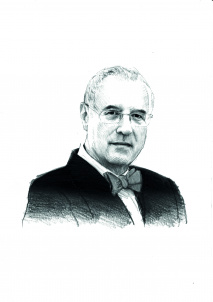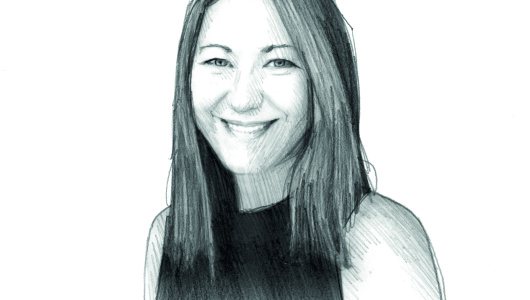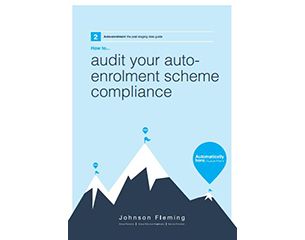
The upcoming inheritance tax (IHT) charge on unused pension benefits is set to have a profound impact on advisers and their clients, upending retirement incomes, portfolios and, of course, estate planning.
Advisers will have to undertake vast amounts of rethinking, reorganising and relearning, as our research on the advice market is starting to reveal.
Pensions will rotate to become income generating and other assets will be used for IHT planning. This great pension rotation also has big implications for platforms, wealth managers and asset managers.
Until now, defined contribution (DC) pensions have been very appealing IHT plans. Clients hold on to their pension fund until they die, which can then pass down the generations free of IHT and will only be subject to income tax when the benefits are drawn.
A client’s estate with a £1m DC pension fund will soon be subject to an extra £400,000 IHT
The normal pattern for clients has been first to draw on their non-pension assets and then only raid the IHT-free pension fund if they need the cash – perhaps for end-of-life care. Their pension funds are effectively free of IHT but still available in an emergency if needed.
Now this best-of-both-worlds estate planning is due to end. From 2027/28, pension death benefits will be included in the value of a client’s estate for IHT, except for dependants’ scheme pensions and charity lump sums.
So, a client’s estate with a £1m DC pension fund will soon be subject to an extra £400,000 IHT.
Pensions will no longer be the great tax saving plan because it will be subject to both IHT and then income tax. The cumulative tax could be as much as 67%, but will depend on the relative tax positions of estate owners and potential beneficiaries.
The cumulative tax could be as much as 67%, but will depend on the relative tax positions of estate owners and potential beneficiaries
However, most clients with DC pensions will be reversing their planning strategies and will start drawing on the pensions and giving away other assets.
Another IHT change in the Budget has reduced the appeal of Aim shares and other business relief-related investments.
Investing in rockier shares on Aim to eliminate an IHT liability has been really attractive – even if the investment dives in value by as much as 40%, the estate is still no worse off. But a potential tax saving of 20% is rather less compelling.
With all this in mind, there are two years in which to ask some key questions about clients’ planning for the rotation and to take action:
- Should clients start drawing income from their pension now it is potentially subject to both IHT and income tax, or should it still be left to the next generation? Advisers could be called on to make some complicated calculations about assumed future tax rates that might apply to clients and beneficiaries, nil-rate bands, as well as rates of return on investments.
- If clients start drawing on the pension, what level of income should they take? Clients will need to decide what they are aiming to use the income for – expenditure or gifts to beneficiaries?
- If the clients want to draw income from the pension, how should they invest the pension portfolio to generate the regular flow? That could mean adjusting portfolios to make them more suitable for regular withdrawals, rather than long-term transgenerational growth. Many people in their 70s, 80s or later would probably choose the simplicity and lifetime guarantees of an annuity rather than – or at least as well as – pension-fund withdrawal.
- If drawing income from the pension could prompt clients to make gifts of other assets, what can they afford to gift? Should the gifts be outright and/or in trust? If they are to be in trust, what kind of arrangement would be suitable – gift and loan or discounted gift plan or some other variation? Some clients may even be attracted to family company structures.
These questions will have some practical implications for advice businesses.
Planning departments will need to come up with some clear and useable advice standards about the strategies that make sense in different circumstances.
Advice will never be in such strong demand, but this uptick could be offset by some major business outflows
Then there are major training and competence implications. Advisers will have to understand the new issues, which will involve a fair amount of unfamiliar tax planning. They will also need to remind themselves about trust-based planning and the relative merits of the variety of IHT plans, as well as the pros and cons of life-assurance bonds and how they are taxed.
The big changeover could have implications for advisers’ business models – and those of platforms and product providers.
Advice will never be in such strong demand, but this uptick could be offset by some major business outflows. Outright lifetime gifts to the next generation could mean losing assets under advice and the income from them, especially if the money is used to pay off mortgages. Widespread annuity purchases could also eat into revenue and business valuations.
Last but not least, there are the practicalities of dealing with all the clients affected by the changes.
In many firms, most of their older and richer clients will be affected. The aim after the rotation will be to leave assets in IHT-free pensions until the last part of 2027 in case the client dies – but the planning needs to start now.
Danby Bloch is head of editorial strategy at Platforum














Comments